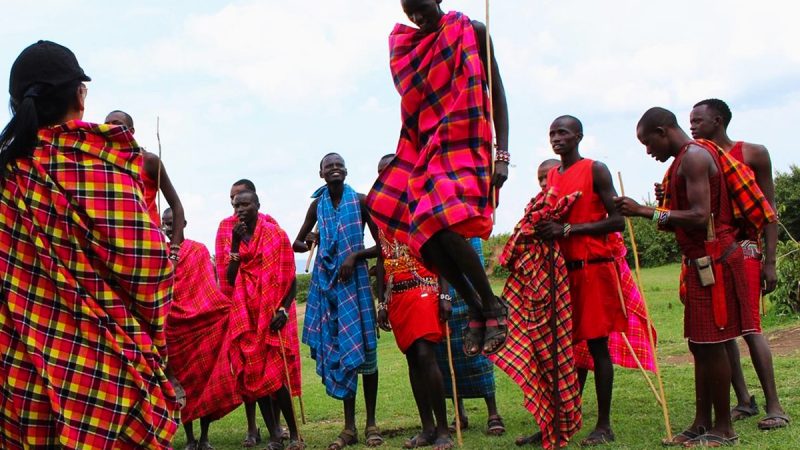East Africa is an incredibly unique place to study besides South Africa having the top eight education institutes and Egypt, East Africa takes a place especially Uganda and Kenya. When it comes to higher education, east Africa has top universities, vibrant cultures and the most stunning wildlife scenery in the world therefore the students studying natural science or conservation studies have a direct access to the local communities untouched by the modern world, as well as natural environments rich in biodiversity.
On the other hand, the fact that East Africa is undergoing a period of economic growth which is the main driving force to the adoption of new technologies, this makes East Africa a perfect destination for tech-savvy student looking to making a mark in future.
Students studying in East Africa make a significant saving on their course fees and living expenses while still receiving an excellent education. Any student studying in East Africa opens up to a unique learning experience given the fact that East Africa is a place of many different people, languages, customs and landscapes.
With all that, Africa has four countries for international students and that is South Africa, Egypt, Uganda and Kenya in which east Africa has only two countries with placements for international students.
UGANDA
According to the observatory on borderless higher education(OBHE), Uganda “excels at providing a truly African university higher education experience” and its universities are known to train leaders and for excellence in health sciences and development studies. Uganda has continued to promote science education at a higher level where a lot of scholarships are provided to science students and especially at the university level and these are given all universities.
However much the number of international students hasn’t increased in the past years, the observatory on borders of higher education estimated that 10% of Uganda’s university population is for international students and while majority of students come from other African countries, around 700 students travel to Uganda every year.
The top Ugandan international universities like Makerere University, Kyambogo University, Mbarara University of science, Gulu University, Kampala international university, Uganda martyrs university, Busitema University and Islamic university of Uganda. These are some of the universities that every international student should visit.
KENYA
Students interested in potentially revolutionary technology should think of travelling to Kenya which is dynamic and upcoming country powered in part by substantial investment in digital technology and future fintech. Kenya’s top learning institute, the university of Nairobi offers courses in education with ICT, information technology and computer science. This university produces the best IT graduates. They also have the Kio kit from BRCK Company which is a portable digital classroom that includes WIFI hotspot, a small server parked with education content and 40 tablets that can be charged wirelessly which makes Kenya’s education system at a digital era.
Approximately 1200 American students travel to Kenya to study every year which makes it one of the popular destinations for international students. Here are some of the best international universities in Kenya; Kenyatta University, Moi University, university of Nairobi, Egerton University, Strathmore University, Jomo Kenyatta University of agriculture and technology, Mount Kenya University, Catholic university of east Africa and many more.
Besides these two countries, there are other East African countries with top education sectors that are either primary, secondary, institutes like technical and universities however these are for people around Africa and not international students given the fact that the standards of their educational institutes are not of grade.
East African countries have tried to make their main language at school English however in Rwanda which has four official languages that are Kiswahili, Kinyarwanda, French and English; for many years teachers always used French and Kiswahili especially at the primary level, in December 2019, the government of Rwanda announced that all Rwanda primary schools should teach in English however the primary teachers in Rwanda do not understand English. It is the third time the government has made changes in the official language in 11 years.
Burundi as well has three official languages that is, English, French and Kirundi since 2014 however like Rwanda, the curriculum in Burundi today mandates the use of Kirundi and French in primary grades, in higher primary grades and therefore French takes precedence over Kirundi. The main language in secondary in Burundi is French therefore for Rwanda and Burundi, there is no place for other countries to study there.
Tanzania has a couple of institutes for international students like international school of Tanganyika, UWC East Africa, Kennedy house international school, Morogoro international school however almost all students (98.9%) who are studying in Tanzania and all staff members both academic and administrative are Tanzanian students and the rest which is only 1.1% is from nearby African countries therefore there are no international students in Tanzania at all.
South Sudan has a few universities and these are university of juba, saint Mary’s college juba, Catholic university of south Sudan, Kampala university juba, upper Nile university, Rumbek university and Bahr el Ghazal university where the official language here is English however south Sudan holds the highest illiteracy level especially for girls where the ratio of girls to boys in school is 1:4. On the other hand, South Sudan has the highest number of students studying from outside their country to other countries which is about 20,000 students form South Sudan across Africa.
East Africa therefore has only two countries that are there for international students however studying in these societies provides the students with the most unique experience since all they study is usually locally available however other countries in east Africa like Tanzania and south Sudan have invested so much into the education sector to increase their international intake for students especially at a higher level of learning.












